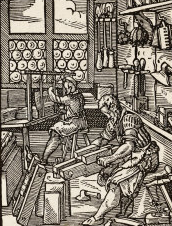La Puissance affective de l'hypallage
Keywords:
De Quincey, Thomas, Schumacher, Julie, autobiographie, hypallage, traumaAbstract
La Puissance affective de l'hypallage : l'émotion réticente, déplacée et intensifiée dans "The Affliction of Childhood" (1845) de Thomas De Quincey et "Reunion" (1982) de Julie Schumacher
Le texte autobiographique de T. De Quincey et la nouvelle semi-autobiographique de J. Schumacher sont des récits poignants liés à la maladie et à la perte d'êtres aimés. Le fossé entre l'époque de ces histoires vécues pendant l'enfance et celle de leur mise en récit (des années pour la narratrice de Schumacher, voire des décennies plus tard pour De Quincey), et leur impact émotionnel dévastateur, jouent un rôle prépondérant. En effet, les deux logiques temporelles superposées (celle du sujet d'alors/ celle du narrateur) s'accompagnent d'une persistance de la souffrance qui perturbe la dynamique chronologique attendue. Malgré les nombreuses années écoulées, les récits continuent à être travaillés par la logique souterraine du deuil (jamais terminé) et du trauma que cristallise la figure très ambiguë de l'hypallage, en l'occurrence des adieux "mutilés" chez De Quincey et des croûtes de pizza "mutilées" chez Schumacher. Le statut d'hypallage de ces deux adjectifs insolites n'est pas immédiatement perceptible (notamment en raison de leur positionnement chronologique décalé) et se construit peu à peu pour le lecteur, à la lumière d'une connaissance panoramique des récits (et de relectures). Nous comprenons alors que ces hypallages, initialement discrètes, sont en fait des concentrés d'émotion, et les points névralgiques des deux textes. La mutilation projetée sur des objets (adieux, pizza) semble atténuer et mettre à distance la souffrance du sujet. Mais en réalité, ces hypallages au fonctionnement métonymique et métaphorique complexe, semblables à des palimpsestes affectifs et textuels, cristallisent, font réverbérer, et intensifient l'émotion, y compris pour le lecteur.
The Affective Power of Hypallage: the Reticent, Displaced and Heightened Expression of Emotion in Thomas De Quincey's "The Affliction of Childhood" (1845) and Julie Schumacher's "Reunion" (1982)
T. De Quincey's autobiographical text and J. Schumacher's semi-autobiographical story are poignant narratives hinging on the disease and loss of beloved ones. The events were experienced in childhood but were not narrated until years (Schumacher) or even decades (De Quincey) afterwards. This long time gap, and the devastating emotional consequences of these early experiences of death play a central role in narrative construction, whereby the superimposition of two temporal logics (the young subject's vs. the adult narrator's), along with the persistence of grief disturb the expected chronological dynamics. Although the experiences go back to the narrator's childhood, the narratives are still tormented and shaped by the subterranean traumatic logic of incomplete and impossible mourning. This logic is crystallized by the very ambiguous figure of hypallage — "mutilated farewells" (De Quincey) and the "mutilated crusts" of a pizza (Schumacher). Because of its chronologically displaced occurrence, we do not immediately interpret the unusual presence of the adjective "mutilated" as a case of hypallage. Its status as such gradually emerges as we read the texts again and thereby acquire a more panoramic knowledge of them. This is when we realize that these initially discreet instances of hypallage are actually saturated with affects and represent what may be seen as the "neuralgic" loci of both texts. Objectifying mutilation by projecting it onto farewells or crusts of pizza might seem to ease the subject's pain and keep it at a distance. Yet, this complex metonymic and metaphoric use of the hypallage shows that it is in fact an affective and textual palimpsest. It condenses and heightens emotion (including the reader's) and makes it reverberate endlessly.
Published
Issue
Section
License
- Work submitted for publication must be original, previously unpublished, and not under consideration for publication elsewhere. If previously published figures, tables, or parts of text are to be included, the copyright-holder's permission must have been obtained prior to submission.
- Authors of accepted manuscripts will assign to L'Atelier the right to electronically distribute their article, or publish it in any form (Internet, CD ROM, printed copy) but authors will retain copyright and, after the article has appeared in L'Atelier, authors may republish their text (in print and/or electronic form) as long as they clearly acknowledge L'Atelier as the original publisher.


